When racing and adventure collide
Published on March 19th, 2022
Thirty boats started the 2022 San Diego to Vallarta International Yacht Race, anticipating a course noted for offwind angles and warm weather, with a Mexican resort at the finish. But aside from tracker details, it would take a 1050 nm before the race details hit shore.
With boats ranging in size from 33 to 100 feet, the average time on the course was 5 days, 2 hours – a length of time on the boat where you need to establish a flow for the on/off watch periods and cycle of racing day and night.
“What you’re trying to do is get to an equilibrium…a balance between performance and self-care,” explained Stan Fleming, owner of J/125 Nereid. “Once you get into that equilibrium, you can sail as long as you want. In this race, at San Cedros on about the third day, for the evening then night watches, I got to do exactly the same thing regardless, and I lost that conventional vision of time.
“That’s kind of a good feeling when offshore. The Cabo Race is barely enough time to get in that flow. But this race was really a long distance race…you have to get into that equilibrium. That’s where experience is key, being able to manage yourself.”
Overall winners John Raymont and the crew of the Ker-51 Fast Exit II dominated their Class 2 rivals, besting second place Mark Surber’s TP52 Bribon by 11.5 hours while the rest of Class 2 landed mid-fleet for overall honors. For a winner’s debrief, click here.
The first 24 hours for Roy P. Disney’s Pyewacket 70 (modified Volvo 70) set the stage for their record breaking elapsed time, and at the first 0800 check in on day two, they also were estimated as overall leader in corrected time. But by day three, Fast Exit II had pushed ahead and at each subsequent 0800 roll call, they maintained a 3-4 hour lead over closest competition – BadPak (Botin 56) and Peligroso (Dencho/Kernan 68).
When BadPak finished at sunrise on March 16 and saw the breeze shutting off for the approach to the finish, they held onto hope that Fast Exit II would lose their grip on overall leader. The 4-hour lead for Fast Exit II slowly ebbed as they fought through the light air toward the finish, but ultimately claimed overall honors by slightly more than 90 minutes.
Class 2 Fast Exit II was able to sail boat for boat with most of the Class 1 entries through the Cabo lee passing 40-70 miles off the coast. But that didn’t last long, and the small window to get through without losing time closed quickly. Those that made it made big gains on the fleet behind. Fast Exit II’s 30-mile lead over Bribon turned into 90 miles.
With the strong westerly at their March 12 start, the Class 1 boats had the wind to generate substantial horsepower and tore down the course. BadPak and Peligroso in particular were well matched over much of the course. Going into the finish, BadPak maintained a 15-mile lead on Peligroso and it looked like if Peligroso could keep BadPack close they could win the class and potentially the Overall Honors as well.
The wind within 10 miles of the finish (coast line) really died down around 0300. BadPak was within 3 miles at that point and only needed 1 hour to sail to the finish for Class 1 honors and 2nd Overall. Peligroso was 7 miles behind and took 3 hours to finish, which pushed them to 5th in Class and 6th Overall.
BadPak’s Navigator Arite Means had three big takeaways from their 1st in Class, 2nd Overall race:
“We planned to keep the boat light, as we knew the Cabo to PV section was under 10 knots. Minimizing the sail list was critical. We only had one jib! Working with Chris Bedford (weather guru) in the planning for the race, our primary focus was surviving Cabo, the whole race can be won or lost there. Thanks, Chris! We also made sure to minimize risk. Big shifts, not getting stuck in a corner out of phase was critical.”
In West Coast ocean races, the J/125s are often seen as formidable opponents having a lot of success in recent races. While not the most comfortable experience, the boats are light and turn small tweaks into immediate gains. Class 3 was won by Fleming’s J/125 Nereid, by 5 corrected time hours.
“Nice breeze up to Cedros,” noted Fleming. “We had a really nice sail and this year’s gulf crossing was above average. Back home [in San Diego] when you get a flat spot inside, it’s like hitting the wall, and everyone behind just sails up to you and stops. But here, the wind just quit coming out of the gulf and so it froze everybody in position, which favored us out front.
“We were watching the wind shadow off Cabo, there was a shadow and a narrow spot to sail right through that was moving towards us, which closed right up after we got through, sometimes you just get it right.”
In addition to his regular crew, Fleming includes a rookie in the team. For the 2021 Transpac, it was Calvin Schmid. In this year’s PV Race, it was Casey Gignac, captain of the San Diego State University sailing team.
“I like to have a rookie on board,” shared Fleming. “The guys really like having a kid on board. They are always explaining what they’re doing, what makes the boat work. They get a chance to think about what they’re doing when explaining it.”
Nereid Navigator Damian Craig added, “We tried to be very disciplined in our sailing. We did a lot of work since 2021 Transpac on our polars and sail crossovers including working with Peter Isler to go through all our race log files.
“We worked very hard to keep the right sails up sailing the correct angles for the course and wind we were in at any given moment. That meant never sailing with the wrong sail up or steering an angle the sail wasn’t meant for so the crew worked very hard.
“We also did a lot of work on the boat, refining systems and controlling the things we can control. Jeremy Davidson did an amazing job preparing the boat for this event and it showed in the lack of gear failures we had coming down. We also did some rating work with our spin sizes reducing our A2s and a bottom job to keep the boat gliding through the water.
“Stan Fleming really stepped up and ensured the boat is as prepared and fast as it could be. We wouldn’t be here with this result without his commitment to the Nereid program and doing all the little things that add up.
“My focus navigating was on making sure we had the most recent weather GRIBs downloaded so I was able to work with the best information. We believed going in that the GFS was best modeling the weather so I really focused on getting those files right when they were updated along with HRRRX at critical points.
“We used an IridiumGO with SailMail and had no broadband of any sort for data. This meant limiting the size of our file request so downloading multiple smaller area GRIBs and combining them together and picking and choosing when to get the high resolution files.
“We used the tracker at certain key sections of the race to see what other boats had done and how our lines compared to them. I like having the tracker delayed four hours as you can see what others did but you can’t use that to make your decisions as the information is too old.
“We tried to stay in the breeze and position ourselves for the shifts that were coming. The GFS was surprisingly accurate on wind direction with the pressure generally being a few knots more. We felt we did well at the critical points of the race in stepping in and using the land features and diurnal shifts to our advantage down Baja. We really did a great job getting around Cabo with boats inside and outside of us not having the great rounding we did.”
The Santa Cruz 50/52s have also been staples of the West Coast ocean racing scene, this year with three competing in Class 4 with a J/145 and DK46. Tom Camp’s Santa Cruz 50 Trouble was the middle-rated boat in the class, and came out with the class win by 45 minutes over 2nd place J/145 Katara.
“In addition to great boat prep, Tom Camp put together a stellar crew that quickly gelled, enabling us to change gears as needed to keep the boat moving and hit the shifts effectively,” noted Trouble’s Navigator Mike Maloney. “We knew we faced tough competition against closely rated boats, so maintaining boat speed was paramount.
“The key to this race is getting into position to get past the Cabo wind shadow. We calculated our course to pass as close (approximately 35 miles) as conditions would allow. A bit of luck here goes a long way, and we had our share getting through before the door closed.
“The final leg offered fantastic sailing conditions with Katara holding a more southerly line that favored them, so we were motivated to keep the pedal down to the finish.”
Michael Ewens Olson 40 Akaw! was the final finisher in the race this year. In some years, the last boat to arrive is late to the awards banquet. But this year, Akaw! finished the day before and also ranked up to 2nd in Class 5 and sailed the shortest course (1093) of the whole fleet.
For the first two thirds of this year’s race, Paul Grossman’s Class 6 White Cloud sailed ahead of the entire fleet, reaching Cabo in the afternoon on March 15, just as Pyewacket 70 made up the 48-hour head start given to the Class 6 starters and passed them. White Cloud was 11th to finish, and was first place in Class 6.
The competition in Class 6 was small but was made up of two boats from Washington and one from San Francisco, whose teams were eager to not only compete but duck the cold home climates and start the summer early with the tropical weather in PV. Grossman sailed with an all Corinthian crew out of San Diego.
White Cloud crew Steve Wright offered, “We had to consider racing with a shorthanded crew of four. Gybes and sail change strategy included conserving energy, reducing mid-watch all hands maneuvers. We knew we needed to stay in watch and rest to be successful.
“This was an amazing race for White Cloud. Lots of very different conditions to contend with and tactical decisions to be made. For us, sticking with our strategy in the face of uncertainty, keeping the boat moving in light air and 24/7 focus and intensity is what made the difference. We all had a great time and really appreciate the efforts of the organizers to successfully put on such a complex event.”
Event information – Race details – Results – Tracking – Photos
Start schedule for 30 entrants:
March 10 – Division 6
March 11 – Division 3, 4, 5
March 12 – Division 1, 2
Source: SDYC

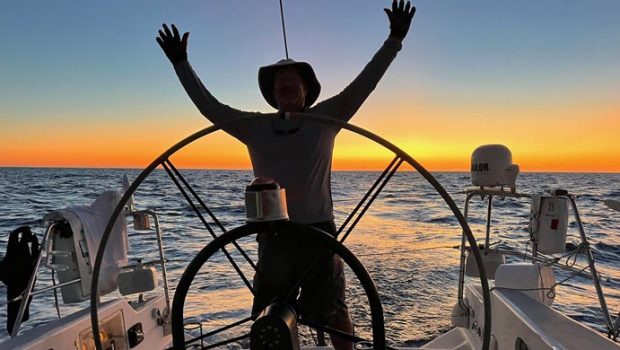


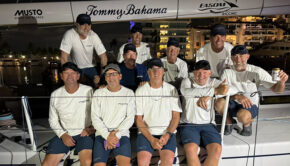
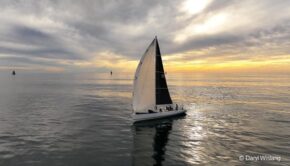
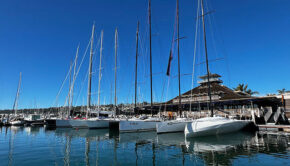
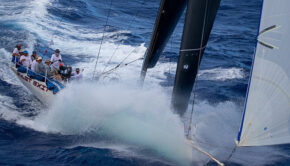
 We’ll keep your information safe.
We’ll keep your information safe.